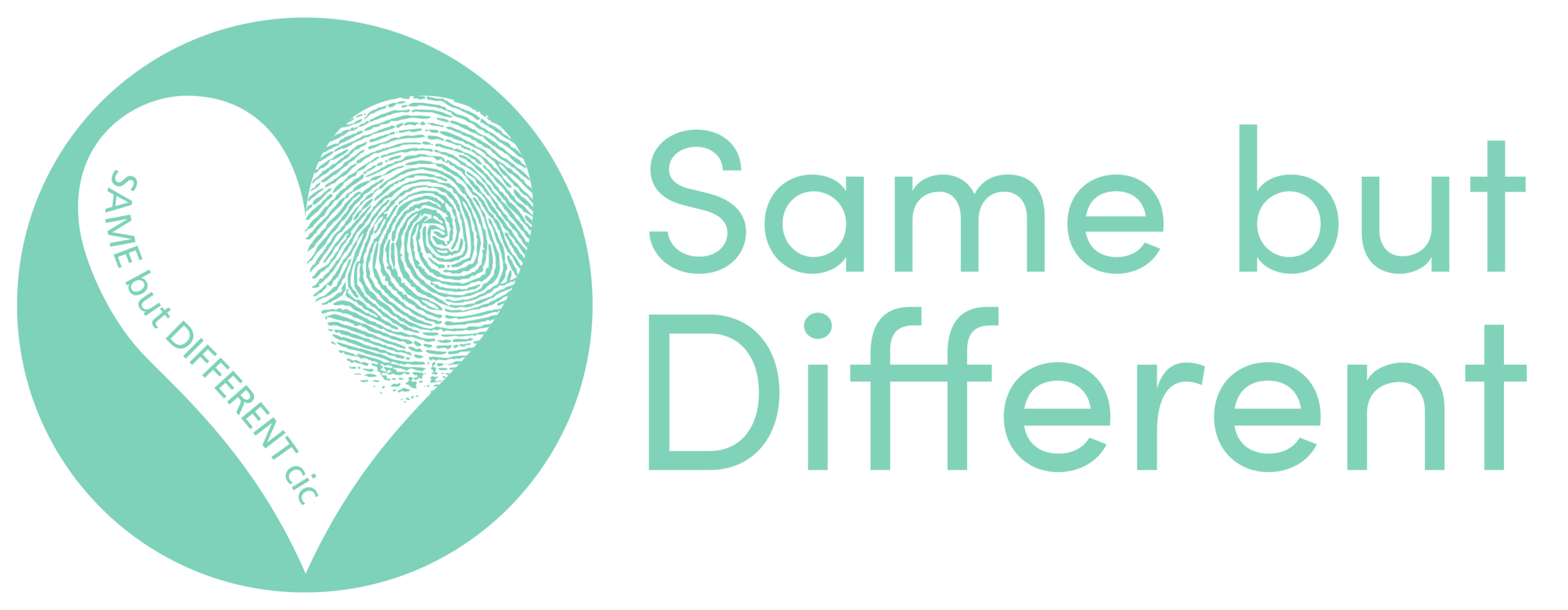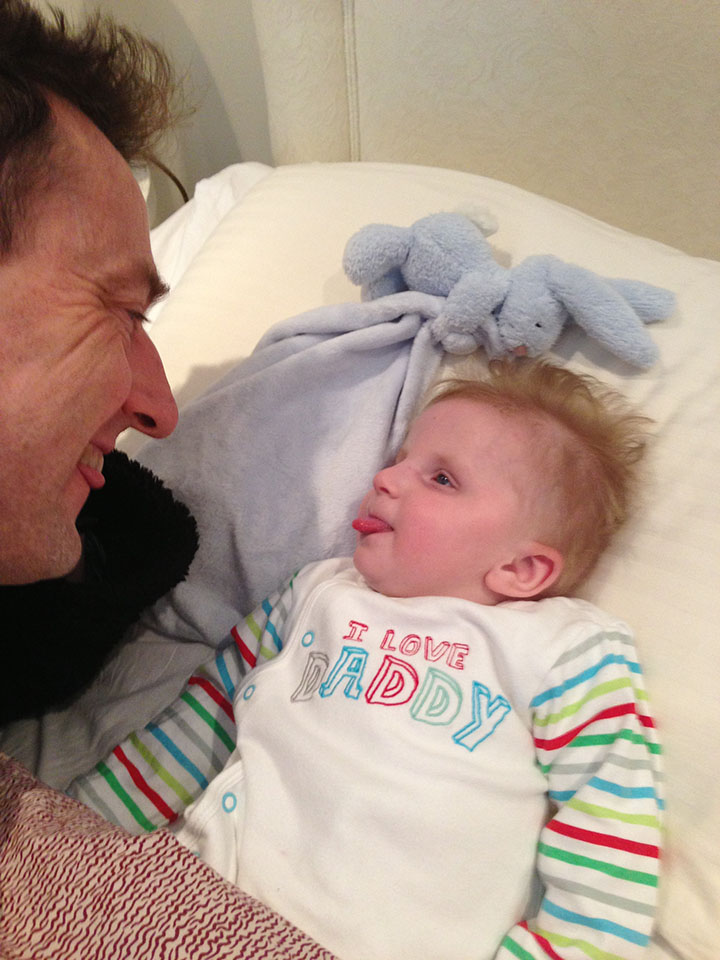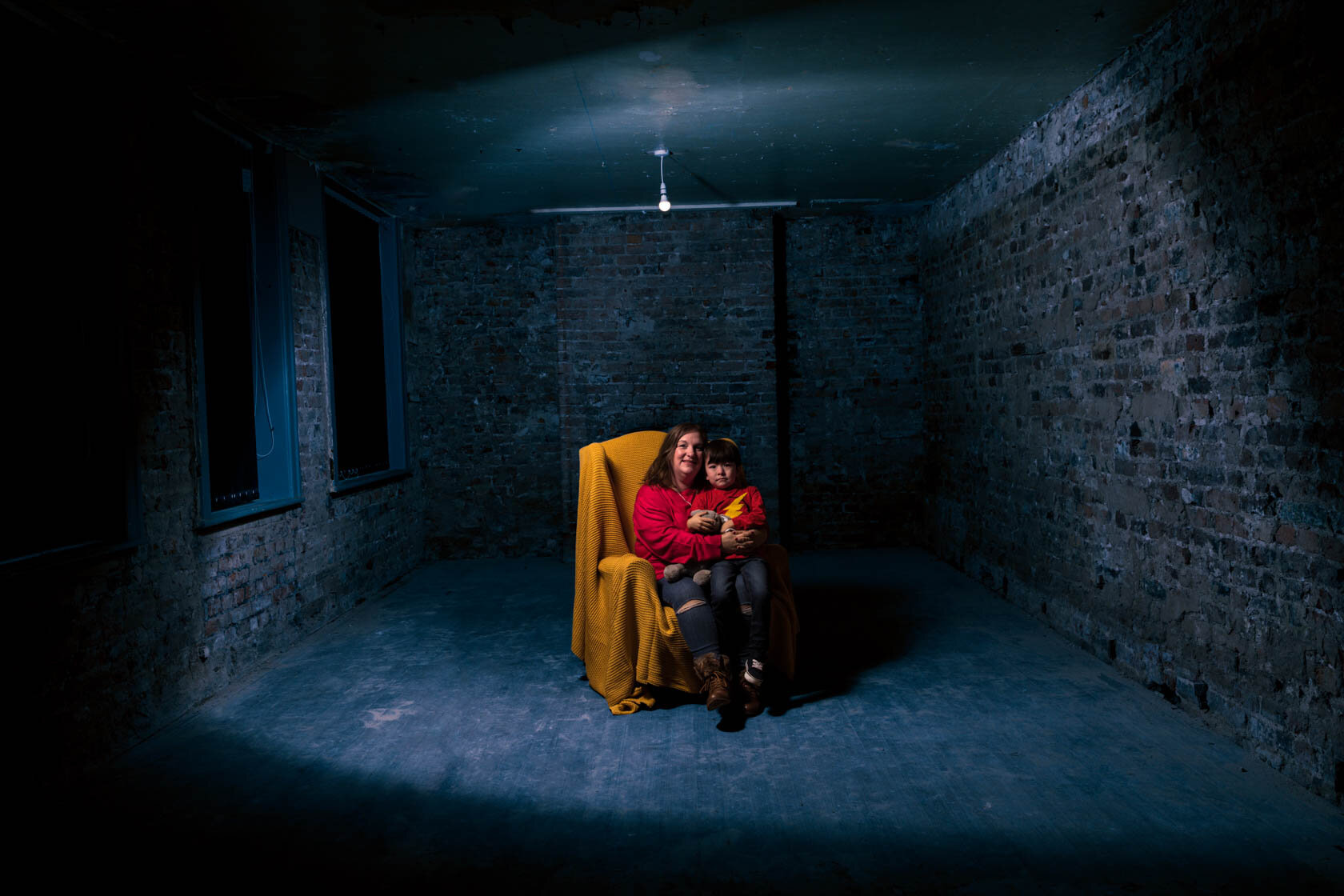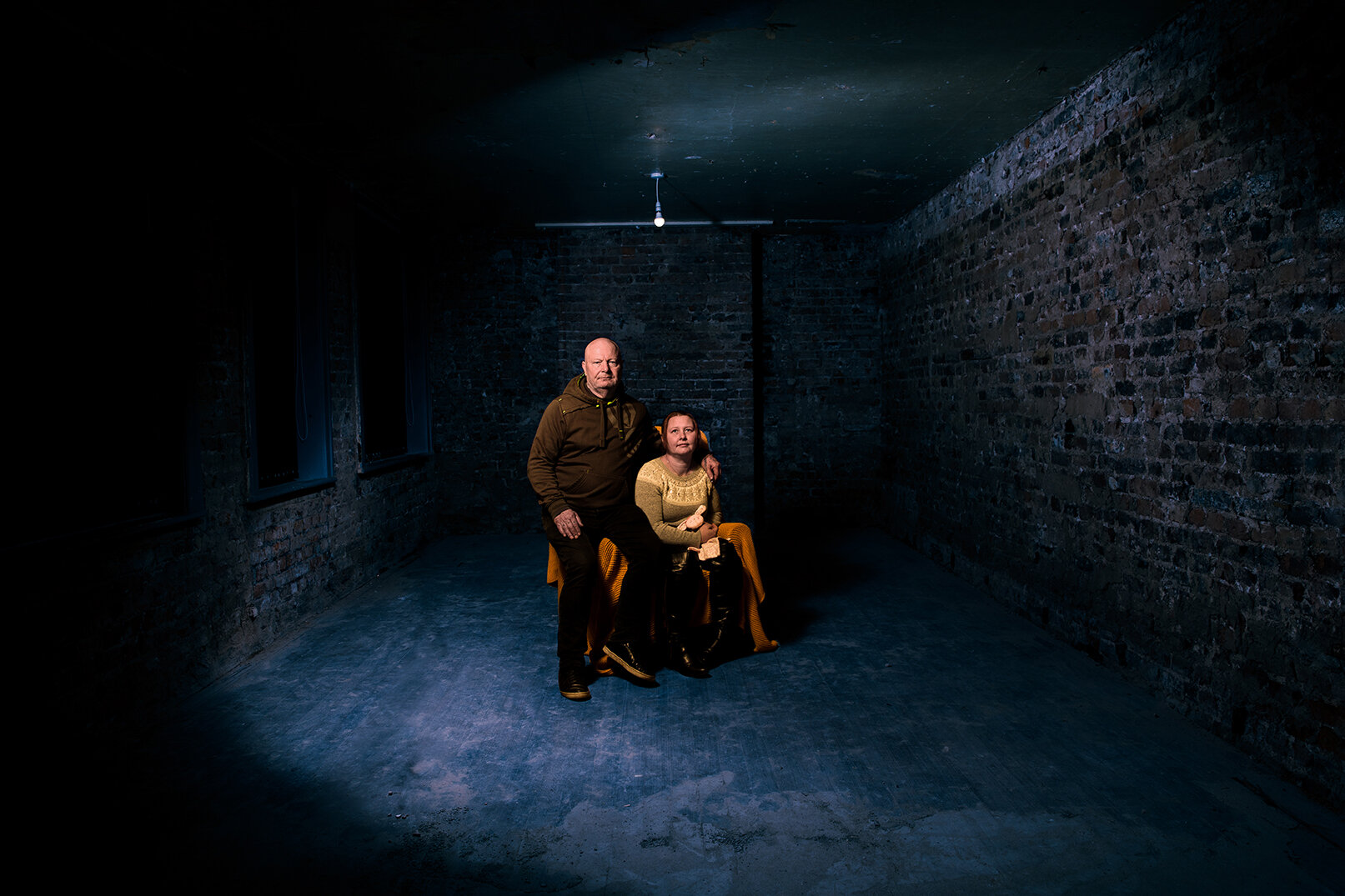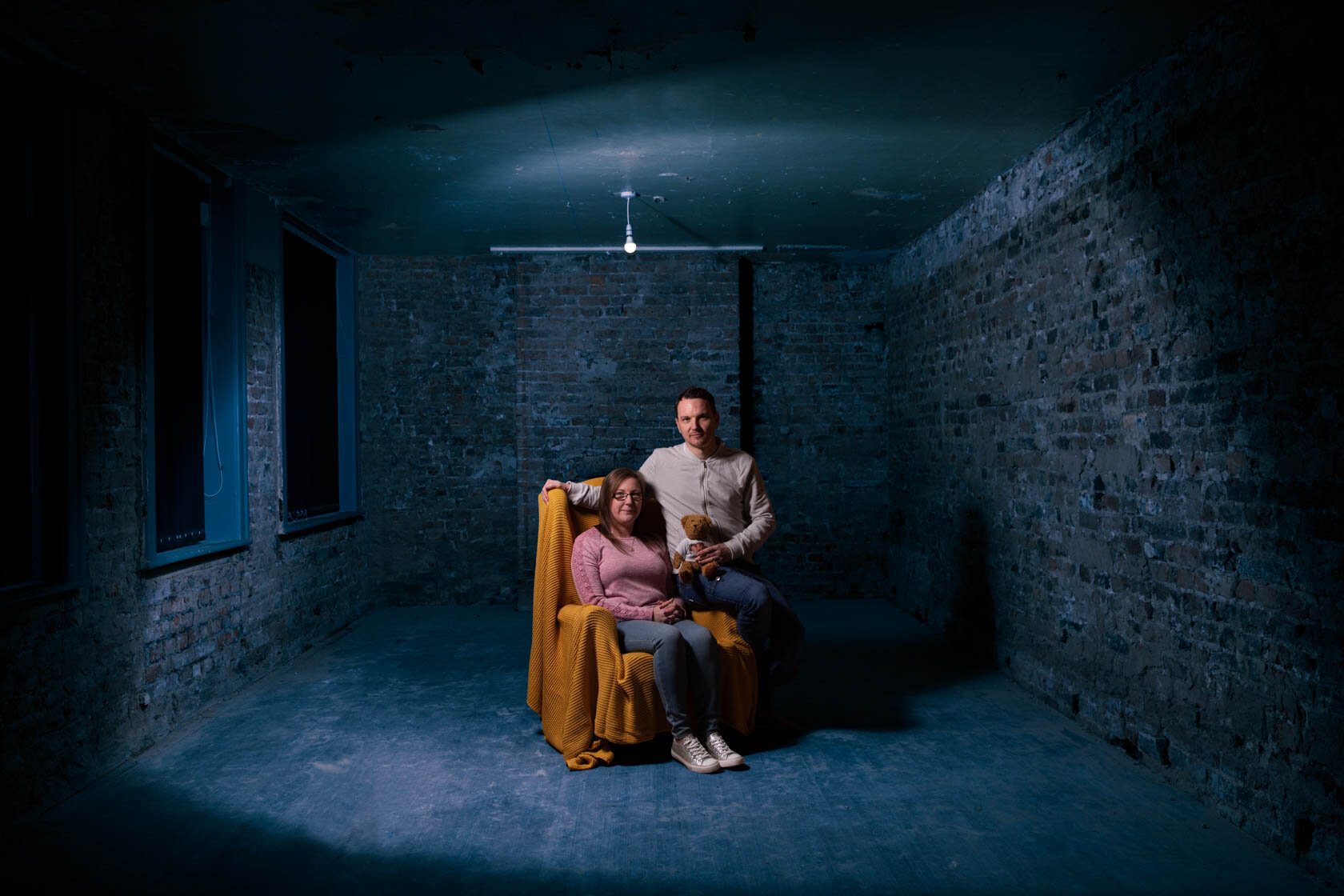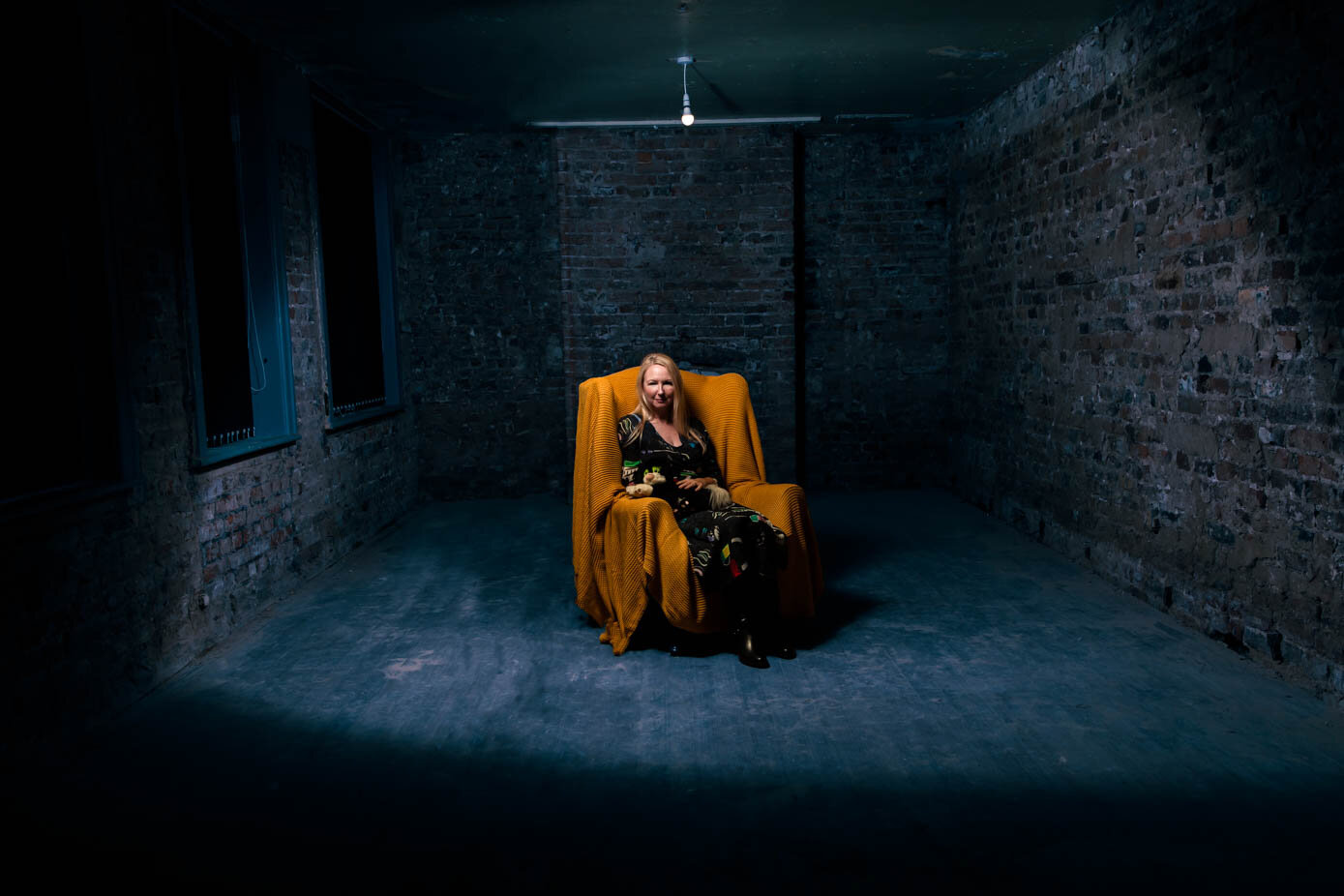Thomas
“Whatever their age when they die, whether they be a child, a baby that died before birth or Granny and Grandad or whoever, they’ve been here, they are real. Oh yes, you can’t forget them, definitely not, happy times and sad times, you can’t forget them.”
30% of children diagnosed with a rare disease die before their 5th birthday. Their families feel isolated and often their loved ones simply do not know what to do or say to support them. This project was designed to start the conversation about child bereavement due to rare disease and highlight the need for more support for families. Kate recently took the time to tell us about her Godson, Thomas.
“Thomas was just delightful. He couldn’t talk, he never walked or sat up and he couldn’t do anything physical like that but he did smile, he had his own special Thomas smile. He also had his own way of showing affection. You’d hold his hand and he’d stroke your face, and that was a Thomas kiss, which was lovely. Thomas is my Godson. He’s always had my heart from when he was just a tiny baby. He was always very small and right to the end he was that size that you could just cradle him. He was just gorgeous.
“Thomas had Cockayne Syndrome, which is an inherited disease whereby the DNA repair is faulty, so it meant that he never grew beyond baby size. He had lots of health issues and from early on we knew that he had a very short life expectancy of around about 4 years. He was actually 4 ½ when he died.
Thomas was very poorly, even before birth, as the scans showed that things weren’t quite right with his brain, so he was delivered a little bit early and he needed a lot of input at birth. It took maybe the best part of a year or more to be diagnosed and that time involved lots of tests, hospital admissions and much uncertainty. He was their first child too which makes it hard as you don’t have a comparison, you just know it’s not right.
To watch from the outside is really hard, especially as I am a nurse and all you want is to make things better. You try your best to find an answer and I found it hard to separate the nurse and the personal side. In the end you just had to be the shoulder to lean on, to cry on, to laugh with, to be there for Thomas’ parents, Sue and Ian.
I have worked in oncology and palliative care for decades now and often witness the end of life which meant that in some ways I could compartmentalise all that was happening to Thomas. Seeing Sue and Ian hurt so much was incredibly hard though.”
“In the end, you just had to be the shoulder to lean on, to cry on, to laugh with, to be there”
“I think, in this situation where someone has such a poorly child, it is important to acknowledge it. You shouldn’t hide it, ignore it and definitely not walk across the road and pretend you’ve not seen them. It was really important to be there and for them to know they could talk to me about anything, even if it was simply about the cost of washing powder or what the weather’s like. Having some normality was important.
When Thomas was very ill, I sometimes took them dinner or offered to look after him so they could have some time to themselves. As a nurse it also meant I was able to spend a couple of nights with him because he needed overnight care as he got more poorly. People often say that they don’t know how to help and so I tell my patients, have a list of stuff inside the kitchen cupboards so if people say what can I do, you know what you want them to do, be it change the bed, hang the washing out, mow the lawn, sit and have a cup of tea or sit and watch Jeremy Kyle, just accept it and be normal. Don’t hide it.”
As part of this project we created sculptures of each child using photographs and 3D scanning technology
“I feel so lucky that they shared Thomas with me, really lucky.
Since Thomas died we have carried on doing what we have always done, being friends, talking about him and remembering the things we did. He’s talked about a lot, you don’t forget him.
Whatever their age when they die, whether they be a child, a baby that died before birth or Granny and Grandad or whoever, they’ve been here, they are real. Oh yes, you can’t forget them, definitely not, happy times and sad times, you can’t forget them. Some people will keep it in, some people will just talk it out all the time. I’m a talker, my husband keeps it in. Because he wasn’t my blood, my flesh, it almost makes you feel guilty for grieving as much as you do when they’re not yours.”
Hear the other Stories
What is Cockayne Syndrome?
Cockayne Syndrome (CS) is a rare disorder, characterised by small stature, microcephaly (having a small head) , developmental delay and premature pathological ageing. It is caused by mistakes in one of two genes: CSA (also called ERCC8) or CSB (also called ERCC6). In order to develop CS, an affected individual must have mistakes in both copies of one of these genes. In most cases, each parent will be a carrier for the condition (i.e. they have a mistake in one of their copies of the gene). This is described as recessive inheritance and means that there is a 25% chance that any children the couple have will be affected by CS.
Cockayne Syndrome is a variable condition, making early diagnosis difficult. Birth weight and head circumference are often normal, as is early development. Reduction in how fast an affected child grows, leading to small stature with a disproportionately small head (microcephaly), may be the first clue to the diagnosis. After the age of 12 months, development is often delayed. Other clinical problems in CS include hearing loss (of any type, but affecting both ears), cataracts, visual impairment due to retinal degeneration, tremor, walking and balance problems (ataxia), joint contractures, progressive loss of body fat and abnormal sensitivity of skin to sunlight. Affected individuals may not experience all of these features. Children with CS can look completely normal early in life, but many develop a sunken appearance to their eyes, and some have facial features (eyes and nose) that appear a little closer together than expected (described as crowded facial features).
Cockayne Syndrome is a progressive and incurable condition, with a mean age at death of 8.4 years. The development of early cataracts (under 3 years) is the most significant indicator of how a patient is likely to progress. Approximately 60% of patients with early cataracts survive to 5 years; for those who have no cataracts or develop them after 3 years of age, survival at 5 years is approximately 95%. However, there can be considerable differences between affected members of the same family, making it difficult to predict long term outcomes in CS. (Source: Amy and Friends)
If you would like more information about Cockayne Syndrome, you can contact Amy and Friends online at www.amyandfriends.org.
If you wish to discuss this project or reproduce any images or story, please contact ceri@samebutdifferentcic.org.uk. The photographer on this project is Ceridwen Hughes (www.ceridwenhughes.com) except for the baby photos which were kindly supplied by the parents.
